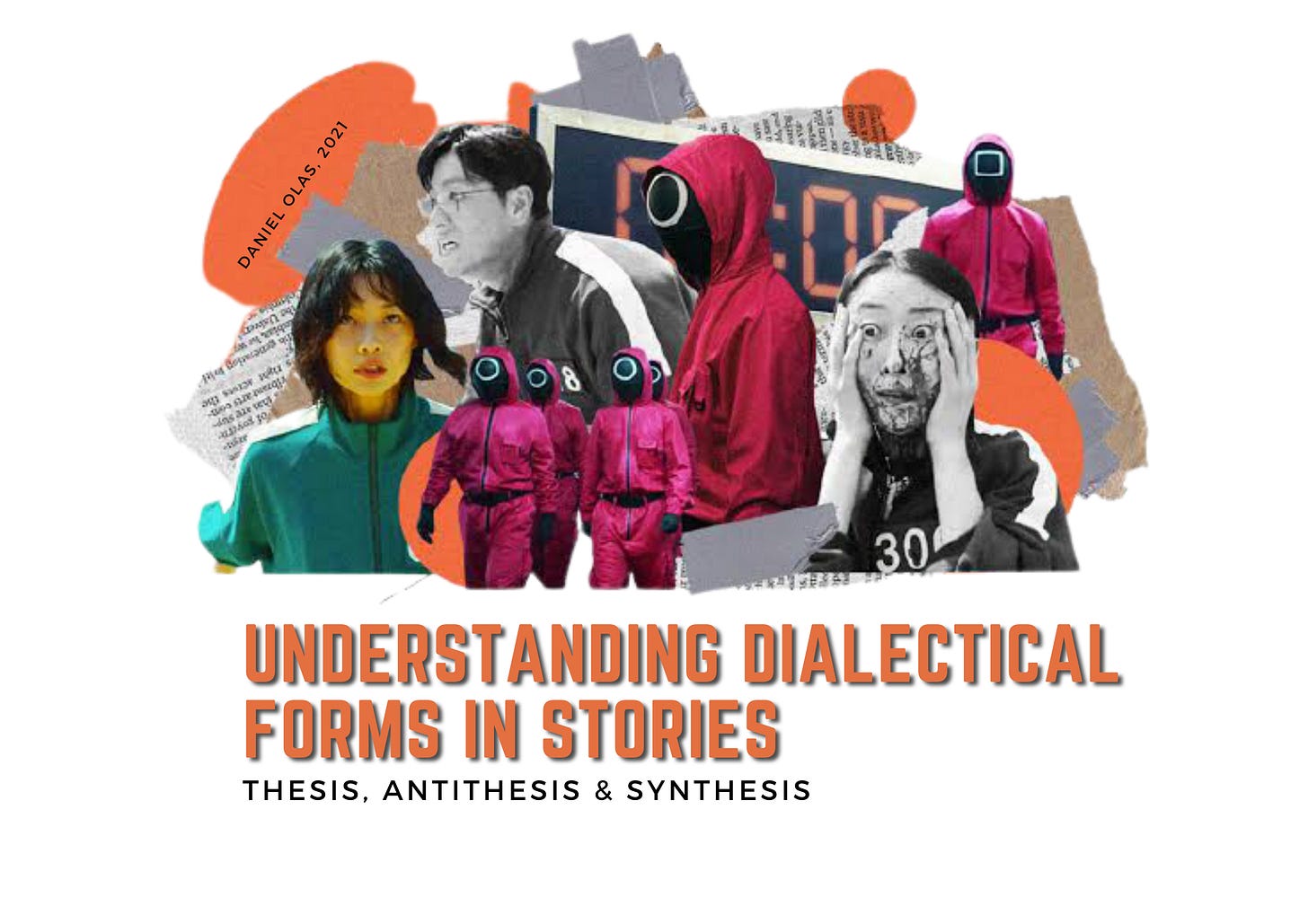Understanding Dialectical Forms in Stories: Thesis, Antithesis and Synthesis.
Every good, water-tight story must assume a dialectical form in which the audience is taken through a logical journey and the process of arriving at a believeable end.
This ideology is what must guide every storyteller in telling believeable stories visually in the sense that, should a story be broken down into the basic three act structure; the act one introduces us to a proposition—an idea we would want the audience to buy into—and act two brings us to an opposition—an opportunity for the audience to decide if the proposition we put forward in act one still stands or not; now in the face of an opposition.
In simpler terms, this is where conflicts are introduced in story structures to test the truism or the validity of the proposition we submitted to the audiences' view in act one. This proposition often comes as premises of a story or the background with the characters subjected to acting and reacting to such premise.
In complex story structures, this premise is spread out through and through the entire story in such a way that for every little thesis that a writer raises, he also raises an antithesis, and the result from this logical exercise births a synthesis that would further move the story forward to another layer of thesis, a countering antithesis and a synthesis; till we all arrive at the final resolution.
Over the years, we've seen the complexity of such story structures in Christopher Nolan's pieces. How he weave the stories around a dialectical form without following a linear progression has been one thing that has continually draw the audience in; of course, the Crime/Psychological thriller audience.
But relating this to Nollywood, and breaking it down in the simplest of terms and language; we might want to see why most of the stories you saw and was disappointed in didn't follow or assume the dialectical form optimally and religiously.
If a story doesn't hold to an extent a logical and believable event timelines (plots), it becomes nauseating to believe or get invested—emotionally or otherwise—in the progression of such. What more? If such story does not give a room for the audience to think or come up with their version of antithesis and consequently, a synthesis; it becomes a case of forcing a narrative down the throat of the audience—when in actual sense of it, all we need to do as storytellers is play the suggestive card.
Taking Squid Game into account, the thesis the creators tries to put forward was simple: Everyone deserves a shot at fortune; everyone who has made some serious money mistakes. It was a simple proposition. But the antithesis stands at: Not everyone deserves to live should they miss this shot. Because, what could they possibly live for?
And right there, we have the audience put forward their antithesis too. Some in favour of the creator's antithesis and others with opposing views. This way, the story was able to draw people in and get them invested emotionally because it follows a logical progression of creating first, a premise, a story, characters, actions and reactions and the resultant effect of those action and reactions without throwing in "a save the cat in its drowning moment" metaphors.
The creators only played the suggestive card but made sure they drew a synthesis from their thesis and antithesis. And that is why we have player 456 or what's that number again, going back to the game.
Thesis: Everyone deserves a shot at fortune regardless of their numerous money mistakes.
Antithesis: Not everyone deserves to live should they miss their shot at that fortune.
Synthesis: Nobody should be made to take a shot at fortune this way at all.
Do you agree with the creator's Hypothesis now?
Yes? No? Which ever your answer is, they have been able to engage you in a logical exercise via visual storytelling and you should learn from this as you seek to independently produce films that transcends your local audience.
To Your Blockbuster—
Daniel Olas


